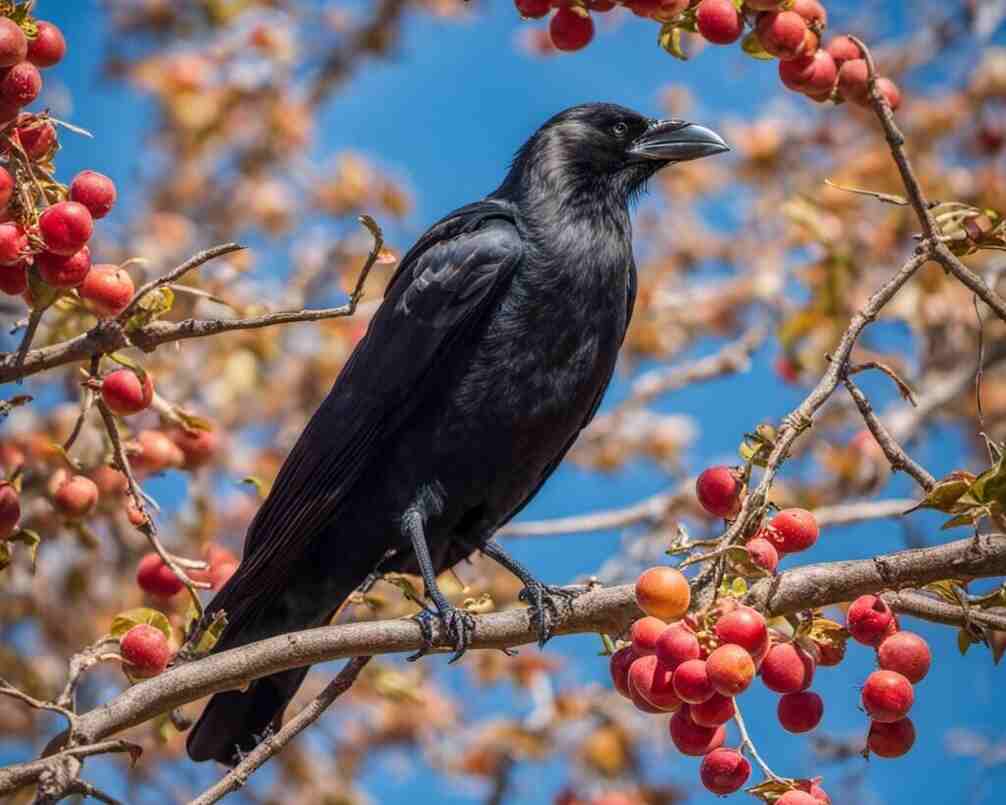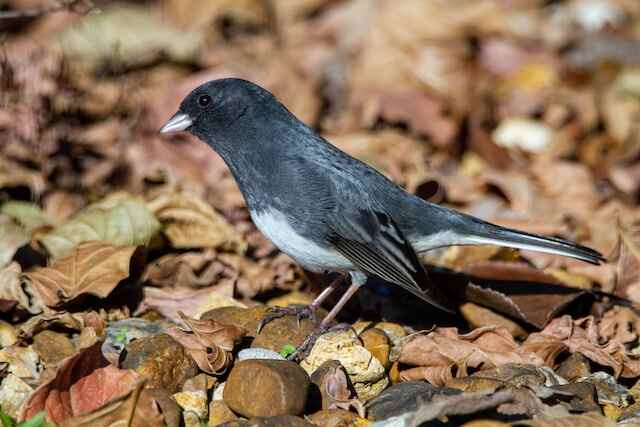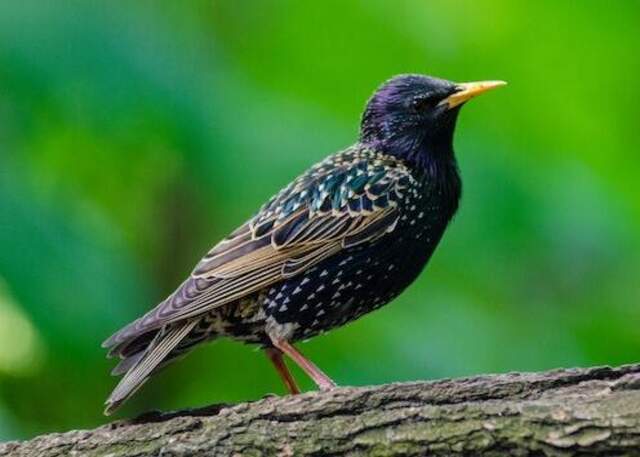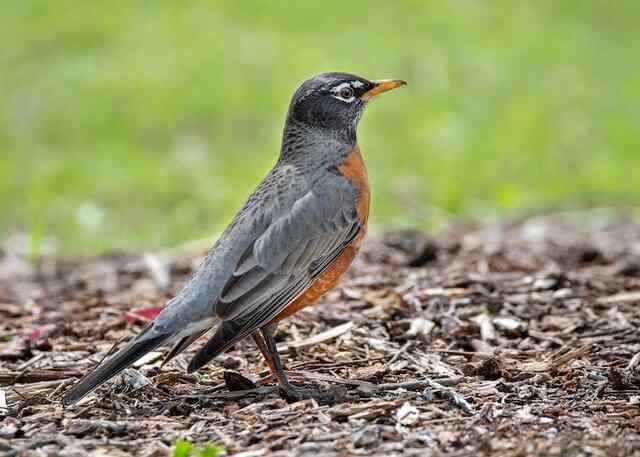Birds play a vital role in the propagation of plants, particularly in new or changing environments. The mutualistic relationship between birds and plants is essential in ensuring the growth and survival of various plant species. Bird pollination and seed dispersal are significant contributions of avian species to plant growth in new places.
Table of Contents
- 1 Key Takeaways:
- 2 How Birds Help Plants Grow in New Places?
- 3 Bird Pollination: A Key Role in Plant Reproduction
- 4 Seed Dispersal by Birds: Spreading Life to New Areas
- 5 Mutualistic Relationship Between Birds and Plants
- 6 Avian Role in Plant Adaptation to New Habitats
- 7 Bird-Foraged Plant Regeneration: A Renewal Process
- 8 The Importance of Birds in Plant Colonization
- 9 Bird-Mediated Ecosystem Services: A Delicate Balance
- 10 Birds as Plant Propagators: Examples from Nature
- 11 Plant Adaptation and Bird-Plant Coevolution
- 12 The Future of Birds and Plant Coexistence
- 13 Conclusion: The Vital Role of Birds in Plant Propagation
- 14 FAQs: How Birds Help Plants Grow in New Places?
- 14.1 How do birds help plants grow in new places?
- 14.2 What is bird pollination?
- 14.3 How do birds disperse seeds?
- 14.4 What is the mutualistic relationship between birds and plants?
- 14.5 How do birds contribute to plant adaptation to new habitats?
- 14.6 What is bird-foraged plant regeneration?
- 14.7 Why are birds important for plant colonization?
- 14.8 What are bird-mediated ecosystem services?
- 14.9 Can you provide examples of birds as plant propagators?
- 14.10 How do birds contribute to plant adaptation through coevolution?
- 14.11 What is the future of birds and plant coexistence?
- 15 Author
Key Takeaways:
- Birds play a crucial role in facilitating plant growth in new and changing environments.
- The mutualistic relationship between birds and plants is essential for plant propagation.
- Bird pollination and seed dispersal are significant contributions of avian species to plant growth in new environments.
How Birds Help Plants Grow in New Places?
Birds help plants grow in new places through seed dispersal, as they consume fruits and berries and excrete the seeds in their droppings, which serve as a natural fertilizer. They also aid in pollination by spreading pollen from one plant to another. Birds are essential to the ecosystem and play an important role in helping plants grow and thrive.
Bird Pollination: A Key Role in Plant Reproduction
Birds play a critical role in the reproductive process of plants through pollination, which is the transfer of pollen from the anthers to the stigma of a flower. The process of bird pollination is unique in that birds are attracted to brightly colored, sweet-scented flowers that are typically larger and more tubular in shape. The nectar produced by these flowers serves as a reward for birds, which inadvertently pick up pollen on their feathers and transfer it to other flowers as they feed.
The mutualistic relationship between birds and plants is essential for both species. Birds benefit from the nectar provided by the flowers, while plants rely on birds for pollination to reproduce. In turn, bird-pollinated flowers have evolved special adaptations to attract birds, such as bright red, orange, or yellow colors and a tubular shape that fits the length and shape of a bird’s beak.
Bird Pollination: A Delicate Balance
Bird pollination is a delicate balance between the needs of both the plant and the bird. Plants must produce enough nectar to attract birds while also ensuring that their pollen is not consumed by non-pollinating animals. Birds, on the other hand, must learn to identify and remember the location of flower patches to ensure consistent pollination.
The mutualistic relationship between birds and plants has evolved over millions of years and is a critical component of many ecosystems. Bird pollination is especially important for plants in areas where other pollinators are scarce.
“Birds play a critical role in the reproductive process of plants through pollination, which is the transfer of pollen from the anthers to the stigma of a flower.”
Seed Dispersal by Birds: Spreading Life to New Areas
Birds are instrumental in the dispersal of seeds to new areas, contributing to plant colonization and diversity. Avian contribution to plant dispersal happens in many ways, from the simple act of dropping seeds while foraging to the purposeful transportation of seeds through the digestive tract.
One of the most common ways birds disperse seeds is through consumption. After eating fruits or berries, birds excrete the seeds along with their waste, often in a different location from where they consumed the fruit. This form of seed dispersal allows for plants to spread beyond their original range and colonize new habitats.
Another method of seed dispersal is through transportation. Some bird species are known to carry seeds in their beaks or on their feathers, dropping them as they move around. In some cases, birds may pick up seeds in one location and fly long distances before dropping them, further expanding the range of the plants.
Bird-mediated seed dispersal plays a crucial role in the colonization of new areas by plants, especially in regions where other forms of seed dispersal are limited. Without the aid of birds, some plant species may not be able to spread beyond their immediate vicinity, leading to reduced genetic diversity and potentially limiting their ability to adapt to changing environmental conditions.
Overall, the avian contribution to plant dispersal is a critical component of healthy ecosystems, enabling plants to adapt and colonize new habitats, supporting wildlife populations, and contributing to the diversity of plant life.
Mutualistic Relationship Between Birds and Plants
Birds and plants share a unique and mutually beneficial relationship where both species depend on each other for survival. For plants, birds are essential for reproduction and propagation in new environments, while birds rely on plants for food and habitat. This mutualism is evident in the role of birds in plant pollination and seed dispersal, which contribute significantly to plant growth in new areas.
Bird-mediated ecosystem services play a significant role in promoting plant growth and survival. Birds aid in pest control by feeding on insects that could damage plants, promoting healthier plant growth. In turn, plants provide birds with food and shelter while facilitating the dispersal of seeds to new areas. When birds consume fruits and berries, the seeds pass through their digestive system and are dispersed in different locations, spreading plant life to new areas.
The mutualistic relationship between birds and plants has evolved over millions of years, shaping the biodiversity of our planet. As birds change their habitat, they carry seeds with them, thereby contributing to the colonization of new areas by plant species. In some instances, plant species have even evolved adaptations to attract specific bird species for pollination and seed dispersal. For example, the trumpet creeper plant has bright red, tubular flowers that attract hummingbirds, which are its primary pollinators.
However, bird habitat loss and population decline pose a threat to the mutualism between birds and plants. The loss of bird species could disrupt the ecosystem and adversely affect plant growth, leading to a decline in biodiversity. Therefore, it is crucial to understand the importance of this mutualism and take measures to protect bird populations to maintain ecological balance.
Avian Role in Plant Adaptation to New Habitats
Birds play a critical role in facilitating plant adaptation to new environments. Through seed dispersal and pollination, birds aid in the establishment and survival of plant populations in previously unoccupied habitats. The avian contribution to plant dispersal is particularly significant, as it allows for the colonization of new areas and the expansion of plant ranges.
Moreover, birds promote genetic diversity and enhance the resilience of plant populations in changing habitats. By carrying seeds to different locations and interacting with diverse plant species, birds foster the evolution of adaptive traits that enable plants to thrive in a variety of conditions.
Examples of Avian Contribution to Plant Adaptation
One notable example of bird-mediated plant adaptation is the coevolution between hummingbirds and nectar-producing flowers. Hummingbirds have a long, slender beak and an elongated tongue that allows them to reach the nectar deep inside the flower. In turn, the flowers have evolved to produce bright colors and fragrances that attract hummingbirds and facilitate pollination.
Another example is the relationship between frugivorous birds and fruit-bearing trees. Birds such as toucans and hornbills consume the fruits of these trees and disperse the seeds through their excrement. This process allows for the regeneration of new tree populations and the expansion of the forest canopy.
Importance of Birds in Plant Colonization
Without the help of birds, plant colonization of new areas would be much slower and less successful. The mobility and range of birds enable them to disperse seeds over long distances and ensure the survival of plant populations in diverse habitats.
Moreover, the avian contribution to plant colonization has enormous ecological implications. As plants grow and spread in new habitats, they provide food and shelter for a wide range of animals and contribute to the overall health and diversity of the ecosystem. Therefore, the continued coexistence of birds and plants is crucial to ensure the preservation of natural habitats and the biodiversity of our planet.
Bird-Foraged Plant Regeneration: A Renewal Process
Bird-foraged plant regeneration refers to the process by which birds aid in the renewal of plant populations through the consumption and dispersal of seeds. This process is an essential component of many ecosystems, as it contributes to the maintenance of genetic diversity and the regeneration of degraded or disturbed habitats.
Birds play a crucial role in this process as efficient plant propagators. They consume fruits and berries, and the undigested seeds are deposited in their droppings, which can contain vital nutrients necessary for germination. This way, birds facilitate the growth of new plants in previously unoccupied areas, allowing for the colonization of new habitats.
The effectiveness of bird-foraged plant regeneration depends on several factors, including the type of plant and the species of bird. Some bird species have specialized beaks and digestive systems that allow them to consume and disperse specific types of seeds. For example, the acorn woodpecker is known to store acorns in tree cavities, which contributes to the growth of oak trees in the surrounding area.
Birds as Plant Propagators
Birds are an essential component of many ecosystems, and their role as plant propagators highlights the interdependence between different species. The mutualistic relationship between birds and plants is characterized by reciprocal benefits, where plants provide birds with food and habitat, and birds aid in plant propagation.
Examples of birds as plant propagators include the rufous-vented chachalaca, which is known to consume and disperse the seeds of strangler figs, and the white-winged chough, which plays a crucial role in the regeneration of eucalyptus forests in Australia. These and other bird species contribute to the maintenance of healthy ecosystems through their role as plant propagators.
The Importance of Birds in Plant Colonization
Birds play a critical role in facilitating plant colonization of new areas by contributing to seed dispersal. As birds consume fruits and other plant parts, they transport seeds to new habitats, where they can germinate and grow. This avian contribution to plant dispersal is essential in establishing thriving plant populations in previously unoccupied regions.
Research has shown that bird-mediated seed dispersal can substantially enhance the establishment and survival of plant populations in new areas. Birds’ ability to disperse seeds across wide distances also promotes genetic diversity, enhancing the resilience of plant populations in changing habitats. Birds’ role in plant colonization is so significant that it has been referred to as a “mobile link” in the process of plant migration.
The importance of the relationship between birds and plants in colonization is further highlighted by the fact that most bird-dispersed plant species cannot survive without their avian partners. These plants have uniquely evolved to attract birds through adaptations such as fleshy fruits, colorful flowers, and nutritious seeds. This coevolutionary relationship between birds and plants has allowed them to adapt to various habitats and colonize new areas successfully.
However, the loss of bird populations due to habitat loss, climate change, and other threats can have significant consequences for plant growth and colonization. To ensure the continued coexistence of birds and plants, conservation efforts are critical in protecting bird habitats and addressing other threats to their populations.
Bird-Mediated Ecosystem Services: A Delicate Balance
Birds play a vital role in maintaining the delicate balance of ecosystems through their contributions as plant propagators. Beyond facilitating plant growth in new areas through pollination and seed dispersal, birds also provide other essential ecosystem services that benefit plant populations.
For example, some bird species help to control pest populations, such as insects that can harm plants. This reduces the need for harmful chemical pesticides that can have negative impacts on the environment. Birds also contribute to nutrient cycling by consuming and redistributing nutrients throughout a habitat.
However, the importance of bird-mediated ecosystem services goes beyond plant growth and maintenance. Birds are also vital components of food webs and can help to regulate populations of other animals. For example, birds of prey help to control the populations of smaller animals, such as rodents and insects, that can have negative impacts on plants.
The importance of birds in plant colonization cannot be overstated. As habitats change due to climate change and human activity, it is crucial that bird populations remain healthy and diverse to ensure the continued propagation of plant species. Conservation efforts that protect and promote bird populations will go a long way in maintaining the balance of ecosystems and ensuring the survival of plant populations.
Birds as Plant Propagators: Examples from Nature
The role of birds as plant propagators is vital in the dispersal and colonization of new habitats. Many bird species are known for their mutualistic relationships with plants, aiding in pollination and seed dispersal. Here are some examples of birds as plant propagators:
| Bird Species | Plant Species | Role in Propagation |
|---|---|---|
| Hummingbirds | Fuchsia | Effective pollinators due to their long beaks and ability to hover in place while feeding on nectar. |
| Clark’s Nutcracker | Whitebark Pine | Disperses seeds by caching them in the ground for later consumption, aiding in the spread of pine forests. |
| Waxwings | Serviceberry | Consumes fruit and disperses seeds in their droppings, aiding in the growth and regeneration of the plant. |
These are just a few examples of the diverse ways in which birds contribute to plant propagation and ecosystem health. The unique adaptations and behaviors of birds enable them to act as effective plant propagators, aiding in the colonization of new areas and the renewal of existing habitats.
Plant Adaptation and Bird-Plant Coevolution
Birds have played a crucial role in shaping plant evolution through a process called coevolution. As birds have adapted to feeding on different plant species, the plants themselves have evolved in response, developing unique traits to attract and interact with their avian counterparts.
One example of this coevolutionary relationship can be seen in bird-pollinated flowers, which have evolved to be brightly colored and often have large, tubular shapes that are well-suited for birds with long beaks and tongues. These flowers produce nectar, a sweet liquid that attracts birds. As the birds feed on the nectar, they transfer pollen from the flowers’ male to female reproductive organs, facilitating plant reproduction.
Similarly, plants have also evolved to use birds as seed dispersers. Some plant species produce fruits that are specifically adapted to be eaten by birds because their digestive systems are able to break down the seeds and help them germinate. Birds also have unique characteristics, such as strong beaks and sharp claws, that allow them to break open tough seed pods and disperse the seeds over wide areas.
The coevolutionary relationship between birds and plants has resulted in fascinating adaptations on both sides, allowing them to thrive in a variety of environments. As plant populations move into new habitats, birds continue to play an important role in facilitating their adaptation and propagation.
The Future of Birds and Plant Coexistence
The continued coexistence of birds and plants is vital to maintaining healthy ecosystems, but both face numerous threats in the modern world. Habitat loss, climate change, and human activities such as agriculture and urbanization can all have a significant impact on bird populations, which in turn affects plant growth and propagation.
Conservation efforts are crucial to ensuring that this delicate balance is maintained. Protecting bird habitats, reducing pesticide use, and promoting sustainable land use are all important steps towards preserving the mutualistic relationship between birds and plants.
Furthermore, it is important to acknowledge and appreciate the role of birds as plant propagators. Many bird species are essential to the growth and survival of plants in new habitats, and without their contributions, certain plant populations may struggle to establish themselves.
As we strive to mitigate the impact of human activities on the environment, it is essential that we include birds in our conservation efforts. By protecting bird populations, we can ensure the continued propagation of plants and the maintenance of healthy ecosystems.
Conclusion: The Vital Role of Birds in Plant Propagation
In conclusion, birds play a crucial role in facilitating plant growth in new environments. Through their mutualistic relationship with plants, birds aid in both pollination and seed dispersal, which contribute significantly to plant reproduction and colonization.
The avian contribution to plant dispersal is particularly noteworthy, as birds are effective at transporting seeds to new areas where they can germinate and establish new populations. This process of plant adaptation to new habitats is further aided by the unique adaptations exhibited by both birds and plants, which have coevolved to optimize their interactions.
However, bird-mediated ecosystem services go beyond just seed dispersal and pollination. Birds also provide critical pest control and plant regeneration services, which are essential for maintaining healthy ecological balance.
As threats such as habitat loss and climate change impact bird populations, it is increasingly important to prioritize conservation efforts that maintain and enhance the vital role of birds in plant propagation. By doing so, we can ensure the continued coexistence of these two important elements of our natural world.
FAQs: How Birds Help Plants Grow in New Places?
How do birds help plants grow in new places?
Birds play a crucial role in facilitating plant growth in new environments through bird pollination and seed dispersal. By pollinating flowers and spreading seeds, birds contribute to the propagation of plants in previously unoccupied habitats.
What is bird pollination?
Bird pollination is the process by which birds transfer pollen from the male reproductive parts of flowers to the female reproductive parts, allowing for fertilization and plant reproduction. Bird-pollinated flowers often have bright colors, strong fragrances, and nectar to attract birds.
How do birds disperse seeds?
Birds disperse seeds through consumption and transportation. They consume fruits or seeds and excrete them in different locations, promoting plant colonization in new areas. The seeds may also attach to the birds’ feathers or be dropped accidentally during flight.
What is the mutualistic relationship between birds and plants?
The mutualistic relationship between birds and plants refers to the beneficial interactions between the two species. Birds benefit from the food resources provided by plants, while plants rely on birds for pollination, seed dispersal, and other ecosystem services.
How do birds contribute to plant adaptation to new habitats?
Birds aid in plant adaptation to new habitats by dispersing seeds and facilitating pollination. They promote genetic diversity, enhance plant resilience, and contribute to the survival and colonization of plants in changing environments.
What is bird-foraged plant regeneration?
Bird-foraged plant regeneration is the process by which birds consume seeds and disperse them in favorable locations, allowing for the renewal and regeneration of plant populations. This process plays a vital role in maintaining healthy ecosystems.
Why are birds important for plant colonization?
Birds are crucial for plant colonization, as they disperse seeds to previously unoccupied habitats. They contribute to the establishment and survival of plant populations in new areas, promoting biodiversity and ecosystem functioning.
What are bird-mediated ecosystem services?
Bird-mediated ecosystem services refer to the broader roles that birds play in maintaining ecological balance. These services include pest control, plant regeneration, and the promotion of genetic diversity, which contribute to the health and functioning of ecosystems.
Can you provide examples of birds as plant propagators?
Some examples of birds known for their role in plant propagation are hummingbirds, which pollinate many flowering plants, and frugivorous birds like the cedar waxwing, which consume fruits and disperse seeds in their droppings.
How do birds contribute to plant adaptation through coevolution?
Birds and plants have coevolved, influencing each other’s evolutionary trajectories. Birds have shaped plant adaptations that attract them for pollination and seed dispersal, while plants have developed features that enhance their chances of successful reproduction with bird assistance.
What is the future of birds and plant coexistence?
The future of birds and plant coexistence depends on conservation efforts to address habitat loss, climate change, and other threats to bird populations. Ensuring the continued coexistence of birds and plants is crucial for maintaining healthy ecosystems and preserving biodiversity.







